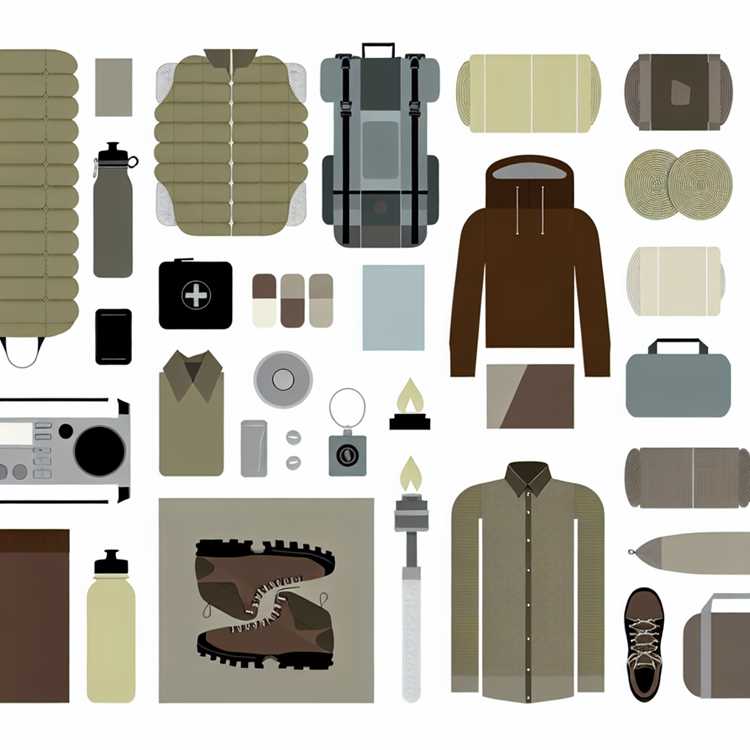
Choose private villas or boutique suites with dedicated staff, an on-call private chef and 24/7 concierge for the most seamless indulgence; expect rates from about $800/night for entry-level overwater or beachfront villas to $2,500+/night for ultra-private penthouses in major hubs. Reserve at least 6–12 months ahead for peak travel windows (holiday weeks, summer months) and 3–4 months for shoulder dates to secure preferred dates, specific room locations and bespoke extras like in-room spa therapists.
Prioritize transport that matches the mood of your trip: private-jet charters typically run from roughly $3,000–8,000 per flight hour depending on aircraft class, while crewed yacht charters in the Mediterranean start near $10,000/week for smaller vessels and can exceed $100,000/week for superyachts with full crew. Luxury safari lodges charge about $500–1,500 per person per night for private concessions; Antarctic and high-latitude expeditions generally start around $10,000 per person. For intimate cultural access, book chef’s-table or after-hours museum visits – expect private dining experiences to begin near $250–600 per person and exclusive venue rentals from $2,000.
Plan logistics early: secure visas and health requirements 8–12 weeks before departure, confirm dietary or mobility needs directly with property managers, and purchase travel insurance that includes medical evacuation and trip cancellation. Use a specialized luxury travel advisor for multi-country itineraries and to obtain perks (room upgrades, complimentary transfers) that agents often negotiate. When calling operators, request written confirmations of transfer times, luggage allowances and any permit costs to avoid last-minute fees.
Personalize every detail: ask for private guides with language skills matching your party, request bespoke menus highlighting local seasonal ingredients, and add short-form private transfers (helicopter or seaplane) to save time – helicopter transfers commonly cost $300–1,500 per person depending on route. Keep one credit card for incidentals and one for prepayments to track charges clearly. With these measures you will convert a standard trip into a curated, indulgent escape tailored to your preferences and timetable.
Booking and Customizing Private Jet and Yacht Charters: Pricing, Contracts, and Pre-trip Inspections
Take this approach: secure an itemized contract, require a documented pre-trip inspection 24–48 hours before departure, and set a clear payment schedule (deposit, balance, and refund triggers) before signing.
Pricing – private jets: expect market hourly rates by category: light jets $2,000–3,500/hr, midsize $3,500–6,000/hr, super-midsize $5,000–8,500/hr, large-cabin/ultra-long-range $8,000–20,000+/hr. Add-on fees commonly include repositioning (one-way reposition = operator quote, often $1,000–10,000 depending on distance), FAA/handling/landing/parking ($50–$2,000 per airport), international fees and overflight charges (varies by country), and fuel surcharges. Empty-leg discounts run 30%–75% off list hourly rate; verify whether the operator keeps repositioning costs for the empty-leg segment. Pricing – yachts: daily bareboat or crewed charter rates range widely: 50–150 ft yachts typically $5,000–$80,000+/day depending on season, broker, and location. Expect an APA (Advanced Provisioning Allowance) of 25%–40% of the charter fee to cover fuel, food, marina fees and consumables, plus crew gratuity 10%–20% and local taxes (VAT/GST) which can add 5%–25% depending on jurisdiction.
Contracts – insist on an operator or broker contract with these named clauses: scope of service (aircraft/yacht ID, registration, model, capacity), pricing breakdown (base rate, fuel policy, handling, repositioning), cancellation and refund schedule (dates and percentages), force majeure (explicit airline/owner vs charterer responsibilities), insurance and liability limits (operator hull and liability, charterer liability cap), maintenance and condition warranties (airworthiness, service status, recent inspections), permits and overflight/berthing responsibilities, payment terms (deposit percent, escrow or trust account, final payment deadline), and dispute resolution (jurisdiction and arbitration). Add an annex listing included items (catering standard, linens, tenders, jet fuel uplift) and optional services priced separately.
Pre-trip inspections – aircraft: require scanned copies of current Airworthiness Certificate, registration, insurance certificate, aircraft log excerpts showing last 100-hour/A-check/major inspections, MEL/AD compliance summary, and crew licenses/medical certificates no later than 72 hours before flight. Perform a physical walk-around with the assigned captain or an aviation consultant at least 24 hours prior; check interior condition, lavatory plumbing, cabin systems (IFE/Wi‑Fi), life‑saving equipment, and fuel uplift plan. If any discrepancy appears, demand written remediation or a downgraded rate.
Pre-trip inspections – yachts: request engine hours, service records, recent haul-out and an anti-fouling date, tender condition, generator hours, battery condition, and safety certificates (liferaft service date, EPIRB registration, SOLAS where applicable). Commission an independent surveyor for multi-day or high-value charters; expect fees $500–$1,500 depending on region and report depth. Conduct a board-and-inventory check with the captain 24–48 hours before embarkation and document fuel, water and provisioning baselines to avoid post-charter disputes.
Negotiation levers: lock a fixed fuel uplift or cap fuel surcharge for the trip; request repositioning fee limits or split the cost if the operator can use the same reposition for another client; push for partial refunds or credit if mechanical delays exceed agreed thresholds (define delay bands and reimbursement amounts); negotiate APA reconciliation timelines (request final accounting within 7–10 days post-charter); seek payment through escrow or card to retain leverage until documents arrive.
Operational checklist to include in contract or email confirmations: passenger manifest and passport copies submitted 72 hours ahead, special catering/inventory lists confirmed 48 hours ahead, pet and medical requirements declared in advance, berth/parking reservations and port/airport permits secured by operator at least 7 days before departure, and a named contact for last‑minute itinerary changes. Require photographic pre‑departure condition records for both interior and exterior so final condition disputes resolve quickly.
Selecting and Reserving Ultra-Luxe Villas and Private Islands: Security Measures, Staffing Needs, and Layout Walkthroughs
Require a written, site-specific security plan and a full risk assessment before you sign any contract or pay a deposit.
Reservation, Contract and Pre-Arrival Protocols
Place a refundable security deposit of 30–50% and set the balance due 30–60 days before arrival; include a clause for emergency medical evacuation costs and a line-item for exceptional provisioning (fine wines, specialty meats, rare spirits). Request a villa/island inventory list and photographic condition report to attach to the contract, plus a vendor-approved provisioning and perishables lead time (standard: 5–14 days for perishables, 21–45 days for specialty items). Ask the owner or operator for certificates: local permits, vessel registration, helipad/airstrip clearance, and proof of public liability insurance covering guest actions and staff labor.
Require background checks for on-site managers and head-of-security, with references and recent contract history. Specify a minimum 72-hour advance notice for arrival logistics: customs clearance for yachts, landing permits for helicopters, and berth/anchorage reservations. Confirm fuel, water and power fuel reserves on arrival (see table for recommended levels).
Security Measures and Protocols
Install or verify layered security: perimeter detection (microwave/infrared sensors), CCTV with encrypted 4K recording and redundant NVR storage, biometric or encrypted key-card access for staff areas, and a hardened control room with UPS plus generator backup. Require 95% perimeter coverage by cameras and an approach-path lighting plan rated at 30–100 lux for vehicle/foot access at night.
Staffing options: hire a licensed security team for the length of the stay or verify an on-call contract with a local security firm; recommend at least one armed rapid-response unit within 15–20 minutes for high-risk guests. Add K9 patrols when private-jet arrivals or significant valuables are present. Implement guest arrival screening: manifest verification, vehicle checks, and secure luggage transfer routes that avoid public paths.
Communicate emergency playbooks: medevac thresholds (e.g., any head trauma, respiratory distress), evacuation routes, primary and secondary pickup points (boat/helipad), and satellite comms frequencies. Confirm satellite phone and VHF radio functionality, plus a tested contact with the nearest hospital and private medevac operator.
Encrypt on-site Wi‑Fi with WPA3, isolate guest and service networks, and require an IT audit that includes firewall rules, VPN for staff admin access, and a plan for firmware updates prior to guest arrival.
Use a chain-of-custody for keys and access cards: sign-out log for staff, coded access for service windows, and timed guest codes for short-term contractors.
Require proof of compliance with local law enforcement for private-island security operations and confirm permitted use of defensive measures (local laws vary on armed private security).
Document security handover at check-in and check-out with timestamps and signatures from the property manager and lead guest.
Staffing Needs, Rosters and On-Site Operations
Set staffing ratios by guest count and service level: Luxury villa (6 bedrooms, up to 12 guests) – 6–10 daytime staff (house manager, private chef, butler, 2 housekeepers, 1 maintenance/engineer, 1 security) and 4–6 overnight staff (night manager, night housekeeper, on-call security). Private island (up to 20 guests) – 25–40 staff across culinary, housekeeping, operations, maintenance, security, marina/landing teams and medical personnel. Expect 1:1 to 1:2 staff-to-guest ratios for fine-dining service and 1:3 for basic turn-down and housekeeping.
Rotate staff on 7–14 day cycles for islands to maintain service quality and limit fatigue; supply staff quarters for at least 60–80% of required staff on short rotations, with overflow arrangements on the nearest mainland. Maintain a crew manifest with vaccination records, certifications (safe food handling, AED/CPR, boat licenses), and two emergency contacts per staff member.
Provision kitchen and service areas with designated cold rooms, dry stores and a separate staff entrance and service corridor that avoid guest exposure. Require a staffed provisioning pickup point and secure delivery timing (early morning deliveries preferred) to minimize disruption.
Include on-site technical staff: 1 mechanical/electrical engineer for facilities up to 6 bedrooms, 2–3 engineers for islands with desalination and renewable arrays. Maintain a spares inventory list for critical systems: genset alternators, watermaker membranes, inverter parts, and bridge components for vessels servicing the island.
Layout Walkthrough: What to Inspect and Ask
Inspect arrival flow: private driveway/helipad/jetty approach, guest arrival foyer, luggage handling routes, and immediate security screening points. Confirm separation between guest zones and staff/service areas with dedicated corridors and service elevators where multi-level. Ask to see a floor plan that highlights the following zones: guest suites, VIP/master suite with secure panic room, staff quarters, commercial kitchen and cold chain, laundry with industrial capacity, security control room, medical bay, mechanical rooms, and fuel/waste storage.
Measure accessibility and circulation: recommend 1.2–1.5 m service corridors, a minimum 1.1 m staff-only stair width, and accessible routes for wheelchair users where required. For private islands, verify dock berths sized for service vessels (minimum 12–20 m berth for supply craft) and a separate tender dock for guest transfers.
Test backup systems on-site: run the generator under load for at least 2 hours, cycle the watermaker with full desalination and storage, and perform a simulated power-fail scenario to verify automatic transfer switches and critical circuit priorities (medical bay, comms, security, refrigeration).
| Category | Ultra-Luxe Villa (6–8 bedrooms) | Private Island (up to 20 guests) |
|---|---|---|
| Security | Perimeter sensors, encrypted 4K CCTV, on-site security guard, biometric locks for staff areas | Perimeter detection (marine+land), control room with redundant comms, licensed rapid-response unit, K9 patrols |
| Staffing (day/night) | 6–10 day / 4–6 night; chef, butler, housekeeper, engineer, manager | 25–40 total with rotations; dedicated marina/air ops, medics, engineers, provisioning team |
| Power & Water | Primary grid or generator + single generator backup; municipal water or 2-stage filtration | Dual gensets, minimum 48–72 hrs fuel reserve, watermaker + 24–48 hr potable reserve, solar array recommended |
| Logistics & Provisioning | Local suppliers, 5–14 day perishables lead time | Vessel/heli logistics, 7–21 day lead for perishables, onsite cold chain and secure stores |
| Layout Priorities | Separate service corridors, staff quarters off-service, secure master suite access | Zoned guest village, centralized ops hub, fuel/waste isolation, clear medevac pickup points |
Before finalizing a booking, walk the property with the operations manager and the person who will run the on-site team during your stay; confirm handover procedures, supply lists, and daily briefing times so the first 24 hours run to plan.
Planning Exclusive Culinary Journeys: Sourcing Private Chefs, Designing Tasting Menus, and Managing Dietary Logistics
Book a private chef 8–12 weeks ahead for peak-season travel and 4–6 weeks for off-peak; confirm availability, travel costs, and a provisional menu within 72 hours of initial contact.
- Sourcing private chefs – channels and expectations
- Use specialist agencies (private-chef agencies, luxury concierge firms), vetted platforms (ChefXchange, Table at Home equivalents), regional chef networks, and culinary schools for junior staff.
- Expect day rates: casual/private dining $600–1,200; high-end tasting menu head chef $1,500–4,000+; add travel + accommodation + per diem. Nightly service for a multi-night residency typically discounts 10–20%.
- Confirm certifications: food-safety (ServSafe Level 2 / Level 3 or local equivalent), liability insurance (minimum $1M per occurrence), and valid work permits if crossing borders.
- Vetting checklist before booking
- Portfolio with at least 3 recent menus and photos of plated dishes.
- Two client references and at least one video call kitchen walk-through.
- Sample costing for menus (per guest), breakdown of ingredient surcharges (truffles, wagyu, live seafood), and a standard cancellation/refund policy.
- Proof of staff vaccinations if required locally and criminal-background check for long residencies.
- Contract essentials
- Fixed items: dates, arrival/departure times, number of service hours, number of courses, tasting fee (if applicable), per-guest rate, payment schedule (deposit 30–50%, balance 7–14 days before), travel and lodging, and overtime rates.
- Operational clauses: kitchen access, equipment inventory, supplier access, right to source local ingredients, corkage fee, postponement/cancellation windows with defined penalties.
- Liability: insurance amounts, indemnity for property damage, and food-allergen liability statement.
- Designing tasting menus – structure and portioning
- Standard tasting format: 8–12 pieces/plates per person over 3 hours. Example breakdown: amuse-bouche (1), cold starter (2), warm starter (2), fish (1), meat (1), pre-dessert (1), dessert (1), petit fours (1).
- Portion sizing: 30–50 g protein per course, 40–60 g vegetable or starch elements; total food weight ~350–450 g per guest across the menu to ensure delight without fatigue.
- Balance textures and temperatures: alternate hot/cold and light/rich; plan palate cleansers (sorbet, herb spritz) after heavier courses.
- Wine/sake pairing guidance: 3–5 pairings for an 8–12 course menu; budget wines per guest $40–120 for modest pairings, $150–600+ for premium pairings with rare bottles.
- Service style and staffing ratios
- Service options: plated tasting (precision timing), family-style (communal), or passed canapés + seated courses. Choose plated for fine-dining timing control.
- Recommended staffing:
- Up to 8 guests: 1 head chef + 1 sous + 1 pastry + 2 servers.
- 9–20 guests: 1 head + 2 sous + 1 pastry + 3–5 servers.
- 21–40 guests: 1 head + 3–4 sous + 1–2 pastry + 6–10 servers.
- Server ratio for elevated service: 1 server per 2–3 guests for plated multi-course menus; 1:4 for casual private dinners.
- Dietary intake and allergen management
- Collect guest dietary forms no later than 14 days prior. Use a standard form with checkboxes for: vegetarian, vegan, pescatarian, gluten-free, dairy-free, nut allergy, shellfish allergy, egg allergy, religious restrictions, and an open field for other details.
- Design alternate dishes for each restricted guest rather than adapting at service. Prep those alternates separately and label clearly.
- Allergen protocol: separate prep zone or use dedicated equipment; color-coded boards and utensils; separate storage bins; clear labeling of plated alternates; physical checklist on pass for each course identifying allergen-free plates.
- Cross-contact control: use disposable gloves when switching tasks, change aprons if moving between allergen and non-allergen prep, and schedule allergen-free items to be plated first when possible.
- Cold chain, equipment and supplier logistics
- Temperature targets: chilled goods kept ≤4°C (39°F); hot-hold ≥60°C (140°F); freezer storage at ≤−18°C (0°F). Use data-loggers for high-value shipments.
- Essential rental equipment: blast chiller, induction burners, salamander/grill, trim station, vacuum sealer, immersion circulator (sous-vide), and plating warmers. Confirm kitchen electrical capacity and gas hookups 7 days prior.
- Local supplier lead times: specialty proteins (wagyu, whole fish) 7–21 days; truffles and seasonal produce 3–5 days; custom bakery/pastry 5–7 days. Place orders with confirmed delivery windows and backup suppliers for perishables.
- On-site run-of-show and timing (48–72 hours and day-of)
- 72 hours: finalize guest list, dietary forms, and confirm produce/meat deliveries.
- 48 hours: receive dry and chilled goods; inspect and log temperatures; update mise en place lists and staffing call-times.
- 24 hours: perform full tasting or rehearsal if travel allows; set tableware, glassware, and service sequence; confirm beverage list and decanting schedule.
- Day-of: morning – final deliveries and storage check; afternoon – mise en place, plating trials, and warming schedules; 60 minutes before service – station brief, table walkthrough, and allergen pass-through verification.
- Cost control and budgeting tips
- Build a per-guest Net Food Cost target: casual $40–80; premium tasting $120–400+. Add 25–40% for labor, rentals, and logistics, then 10–15% contingency for market price swings.
- Negotiate a fixed ingredient cap for items like seafood and truffles; agree on surcharge percentages for price spikes above an agreed threshold.
- Limit waste: pre-portion proteins and plan reuseable elements across courses (e.g., reduction sauces, infused oils) without repeating flavors.
- Final checklist before confirmation
- Signed contract with menu annex and dietary list attached.
- Confirmed supplier delivery windows and backup vendors.
- Insurance certificates and local permits on file.
- Staffing roster with travel and accommodation details.
- On-site equipment list and electrical/gas verification.
- Guest communication: arrival time, dress code, and dietary submission deadline.
Follow these steps and use the checklists to reduce surprises, keep costs transparent, and deliver a fine-dining private meal that aligns with guest preferences and operational realities.
Q&A:
What are some lesser-known luxury accommodations that guarantee privacy and exclusivity?
Look beyond the usual five-star hotels: private-island villas, entire villa buyouts, and small private estates with dedicated staff offer real seclusion. Consider luxury safari camps that take only a handful of guests, exclusive-use mountain chalets reached by helicopter, and converted historic estates available for private hire. Work with a trusted concierge or specialist broker who can arrange staff restrictions, private transfer options and on-site provisioning so you rarely need to mix with larger hotel crowds.
How can I arrange a bespoke culinary event with a renowned chef while traveling?
Start by contacting a concierge service or a chef-placement agency that handles private dining. Provide clear details about the number of guests, dietary restrictions, desired cuisine and budget. Expect to book several weeks or months in advance for in-demand chefs; some will require a minimum spend and travel allowance. Ask about sourcing local produce, whether the chef will use your venue or a private kitchen, and if sommelier services are available. Finally, confirm menu tasting options and any extra permits needed for public venues.
Which destinations combine close wildlife encounters with high-end comfort?
Several regions pair excellent wildlife viewing with refined lodging. In southern Africa, Botswana offers private mobile camps and luxury lodges with very small guest numbers and guided game drives. The Galápagos can be explored on small luxury yachts that limit passenger counts for both comfort and conservation. Rwanda and Uganda feature luxury lodges near gorilla parks that provide private guides and evening spa treatments. For polar wildlife, boutique expedition ships in the Arctic and Antarctica deliver upscale cabins alongside expert naturalists. Seek operators that run limited-capacity departures and follow strict conservation protocols to protect animals and habitats.
How do costs compare between hiring a private jet, chartering a yacht, or taking a luxury train?
Private jets: short flights start in the low thousands of dollars per flight hour for small jets; large-cabin jets run several thousand to tens of thousands per hour. Yachts: a modest motor yacht can begin around tens of thousands per week; larger luxury yachts often cost hundreds of thousands per week plus fuel, docking and crew expenses. Luxury trains: many offer per-person fares that range from mid-thousands to tens of thousands for multi-day routes. Final prices depend on season, itinerary, required crew or staff levels and additional fees such as berthing, handling and catering.
What health and safety measures should I expect at high-end properties now?
High-end properties commonly provide private transfers, enhanced cleaning of guest areas, HEPA filtration in key spaces and options for in-room dining and private spa treatments. Many maintain staff testing protocols and limited contact check-in. Some hotels partner with local medical providers for on-call consultations or rapid testing. Ask the property about their current policies on staff vaccination, air handling, guest testing and cancellation flexibility before booking.




